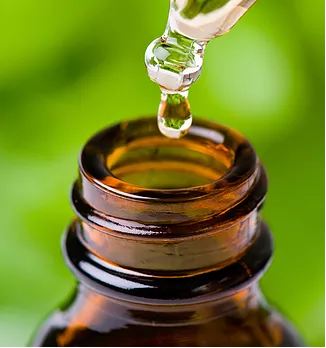Allergic Illness - Therapy At The Marsden Centre

Diet
Diet modification is often not considered in the conventional approach to allergy treatment in Vaughan. From a naturopathic perspective, our diet has a very large role in the allergic and inflammatory response that is mounted by the concentrated immune cells in the intestines. It is also well known that various foods and inhalant allergens have cross-reactive proteins. Thus, those with a certain environmental/inhalant allergy can be exacerbated with eating certain foods with a similar protein sequence. This is described as Oral Allergy Syndrome (OAS).
Cross-reactivity of Foods with Inhalants
Ragweed Allergy: Ragweed cross-reacts with bananas and melons, so people with ragweed allergies may also react to honeydew, cantaloupe, and watermelons, or tomatoes. Zucchini, sunflower seeds, dandelions, chamomile tea, and Echinacea may also affect some people.
Birch Pollen Allergy: People with birch pollen allergies may react to kiwi, apples, pears, peaches, plums, coriander, fennel, parsley, celery, cherries, carrots, hazelnuts and almonds.
Grass Pollen Allergy: People with grass allergy may react to peaches, celery, tomatoes, melons, and oranges.
Natural Rubber Latex (NRL) Allergy: Like pollen allergy, people allergic to natural rubber latex may react to bananas, avocados, kiwi, chestnut, and papaya.
Other Tips to Reduce Symptoms of Seasonal Allergies
Short of relocation, there is very little anyone can do to prevent exposure to allergens outside the home or workplace. But indoors is a different story. Here are seven steps you can take to get back control of your springtime allergies:
- Schedule outdoor activities for early or late in the day. Pollen counts are usually highest between 10 a.m. and 4 p.m., so experts recommend scheduling outdoor activities – such as errands and workouts – early in the morning or later in the day.
- Keep shoes outside, and brush off pets that have been outdoors. Pets, kids and shoes can bring pollen inside the house
- Keep your windows closed whenever possible and run the air conditioning
- Use an air purifier to remove allergens from the air indoors. The Marsden Centre recommends the IQAir HealthPro Series room air purifiers for allergen removal. IQAir HyperHEPA filtration in the HealthPro Plus is proven and certified to filter particles of all sizes with a minimum efficiency of 99.5%.
- Use a vacuum with a HEPA filter. Ordinary vacuums stir up allergens and recirculate small particles instead of capturing them.
- Don’t hang laundry outdoors on the line to dry in the fresh spring air. Especially during allergy season, dry clothes indoor in a dryer.
Cut back on the use of carpeting and drapes in your home. Tile and hardwood floors are preferable to carpeting, which harbors allergens in your home. Shutters and blinds are preferable to drapes for the same reason.
Web Resources:
The Weather Network Pollen Counts by city for Canada
You may click on the button below to go back and check out other sections for more information on treatment of allergic illness at the Marsden Centre.